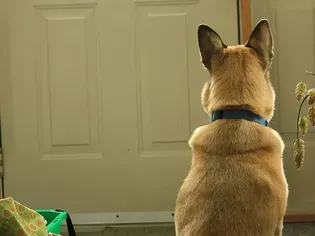How to Train Your Dog to Wait
Updated on 04/26/24

Mastering the Art of Patience: A Comprehensive Guide to Training Your Dog to Wait
For dog owners, teaching their furry companions to wait can be a transformative experience, fostering patience, self-control, and a deeper bond between pet and owner. While it may seem like a simple request, training a dog to wait effectively requires a systematic approach, patience, and consistency. In this comprehensive guide, we delve into the art of teaching your dog the valuable skill of waiting, addressing common challenges and providing detailed step-by-step instructions.
Understanding the Importance of Waiting
Before embarking on the training journey, it's crucial to grasp the benefits of teaching your dog to wait:
* Enhanced obedience: A dog that knows how to wait is more receptive to commands and behaves more consistently in various situations.
* Improved safety: Teaching your dog to wait before crossing a road, approaching strangers, or chasing after squirrels can prevent accidents and ensure their well-being.
* Reduced anxiety: Learning to wait promotes calmness and self-control in dogs, reducing their restlessness and reactivity.
* Strengthened bond: Training your dog to wait fosters a sense of trust and cooperation between you and your pet, deepening your connection.
Step-by-Step Training Techniques
Now that you understand the significance of waiting, let's delve into the training techniques that will help your dog master this skill:
1. The Basic Wait Command
a. Start by having your dog sit or lie down in a quiet indoor location.
b. Hold a high-value treat in front of their nose.
c. Slowly move your hand backward, keeping the treat visible.
d. As your dog resists following the treat, say "wait" calmly.
e. Wait for a few seconds, then release the treat and praise your dog.
2. Gradually Increasing Distance and Duration
a. Once your dog has mastered the basic wait command, increase the distance between you and the treat.
b. Start with a short distance, gradually moving further away until your dog can wait for several seconds at a significant distance from the treat.
c. Similarly, increase the waiting duration gradually, starting with a few seconds and building up to longer periods.
3. Adding Distractions
a. As your dog becomes more proficient at waiting, introduce distractions to test their focus.
b. Start with minor distractions, such as a nearby toy or a person walking past, and gradually increase the intensity and variety of distractions.
c. Ensure your dog maintains a wait position despite the distractions.
Common Challenges and Tips
* Impatience: If your dog gets up before you release the cue, calmly return them to the wait position and try again.
* Reward inconsistencies: Always reward your dog immediately after they follow the wait command. Consistency reinforces the behavior and makes training more effective.
* Using the word "wait": While "wait" is a common command, choose a word or phrase that you consistently use to avoid confusion.
* Patience and persistence: Training a dog to wait requires patience and persistence. Be consistent with your training sessions and don't get discouraged if your dog doesn't progress as quickly as you'd like.
Real-Life Examples
To illustrate the practical application of these training techniques, let's explore some real-life examples:
* Crossing the Road: After teaching your dog the basic wait command, practice at a quiet intersection. Hold your dog by the collar, say "wait," and wait for approaching cars to pass before allowing them to cross.
* Meeting New People: When encountering strangers during a walk, instruct your dog to "wait" before allowing them to approach the person. This prevents your dog from jumping or becoming overly excited.
* Preventing Resource Guarding: Teach your dog to "wait" before approaching their food bowl, toys, or other objects they may guard. This promotes calmness and reduces the risk of aggression.
Conclusion
Training your dog to wait is a rewarding experience that fosters patience, obedience, and a more harmonious relationship between you and your pet. By following the step-by-step techniques outlined in this guide, addressing common challenges, and implementing the training in real-life situations, you can empower your dog with a valuable skill that will benefit them throughout their lives. Remember, the key to success lies in patience, consistency, and a bond built on mutual respect and understanding.
Explore More Pets

Basic Training
Puppy and Baby Introductions

Working Dog Breeds
All About Search and Rescue Dogs

Dog Treatments
Puppy Vaginitis: Signs, Causes and Treatment

Dog Adoption
After More Than 1,200 Days in the Shelter, Coco Goes Home

Basic Training
How to Train Your Puppy to Go on Potty Pads

Hybrid Dog Breeds
The Difference Between a Mutt, Mixed Breed, or Designer Dog?

Dog Treatments
Nail Problems in Dogs

Puppies
7 Reasons Why Two Dogs Are Better Than One